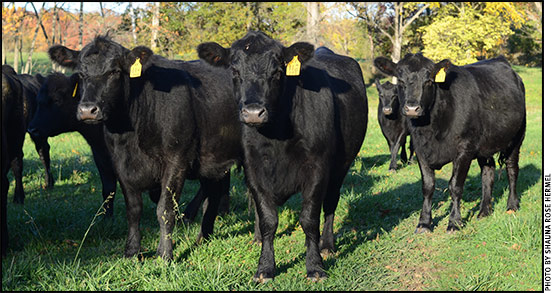
Don’t Let Those Heifers Slip Now!
Heifers should be managed to avoid short-term nutrient restriction to maintain normal estrous cycles.
As we get closer to April and the breeding season for replacement heifers that are destined for a spring-calving herd, proper nutritional management is more important than ever. If your operation was fortunate enough to receive moisture this year and grow wheat pasture, the yearling heifers may have been grazing a diet very high in protein and energy. In other situations this winter, the heifers have been fed supplement and hay.
The heifers will be turned in with the bulls or put on a synchronization program to be bred in April. In some cases this means that the heifers must be moved from one location to another that is closer to working facilities. The trick, of course, is to not let those heifers go on a steep downslide in energy intake as we approach the breeding season.
Dormant Bermuda grass or native pastures will be very low in energy and protein until “green-up” occurs later in the spring. Research has shown that if heifers (near the time of reaching puberty) undergo a severe reduction in dietary intake of protein and especially energy, breeding success may be disappointing.
Oklahoma State University researchers have studied the impact of short-term energy restriction on ovulation rates of cycling replacement heifers. This trial is reported in the 2001 OSU Animal Science Research Report. The effects of acutely restricting nutrition on ovulation and metabolic hormones were evaluated in Angus ✕ Hereford heifers.
All of the heifers were housed in individual pens in a barn and fed a diet supplying 120% of their maintenance requirements for protein and energy (1.2 M) for 10 days to allow time to adjust to the environment and diet. All of the heifers were determined to be cycling at the conclusion of this adjustment period.
Then the heifers were split into two groups. Half of the heifers were fed a diet supplying either 40% of their maintenance requirements (0.4 M). The other half of the heifers continued on the original diet that supplied 120% (1.2 M) of the maintenance requirements. All heifers were injected with prostaglandin so they would ovulate on about Day 14 of the trial. Seven of 10, or 70%, of the 0.4 M heifers did not ovulate as a response to the injection, whereas all of the 1.2 M heifers had normal ovulation.
In this study, restricting nutrient intake for 14 days prevented ovulation in a large percentage of beef heifers without altering visible body condition. Heifers should be managed to avoid short-term nutrient restriction to maintain normal estrous cycles.

Editor’s Note: Glenn Selk is an emeritus extension animal scientist at Oklahoma State University and a regular contributor to OSU Extension’s Cow-Calf Corner newsletter, from which this article is reprinted with permission.





